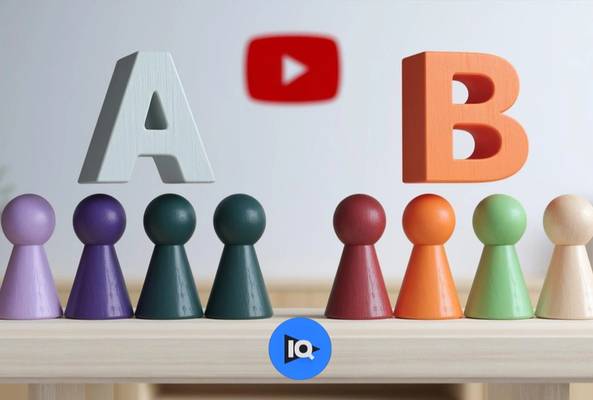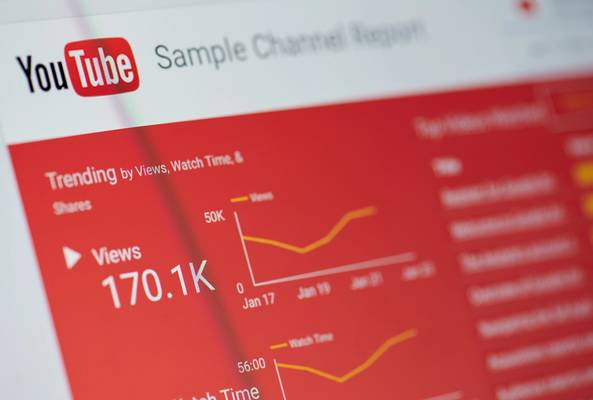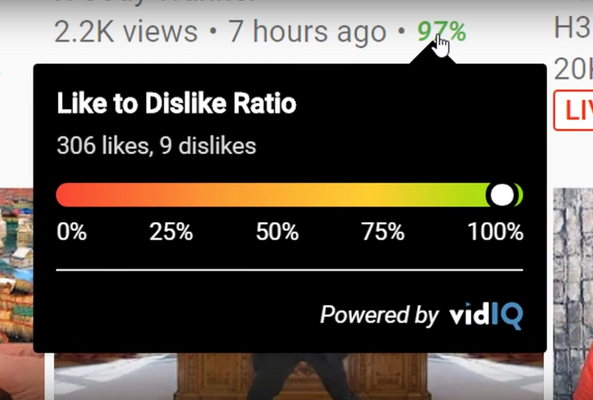Lydia Sweatt is a writer who loves balancing her article/blog time indoors with a healthy dose of nature. She bikes, hikes, and identifies edible plants along the way.
YouTube Analytics: The 6 Most Important Video Metrics (Updated for 2026)
When it comes to YouTube Analytics, creators who understand which video metrics and audience metrics matter most are the ones most likely to significantly boost their channel growth and performance.
It’s time for you to do the same thing. But before we jump into our list, let’s confirm how to access our analytics.
From Desktop, simply go to YouTube Studio and click on Analytics. Take note of the “Advanced mode” in the upper right part of the window.
From Mobile, open the YouTube Studio app and tap Analytics at the bottom.
Throughout this article we will reference and show examples from a desktop view.
All set? Then let’s talk about the most critical YouTube Analytics for 2026 and how to use them effectively.
1. Impressions Click-Through Rate (CTR)
Impressions CTR is the percentage of people who click on a video after seeing the thumbnail.
If 10,000 people see a video’s thumbnail, but only 500 people click it, that’s a 5% CTR. In other words, 5% of people who saw the thumbnail decided to watch the video.
YouTube’s channel dashboard shows your CTR for multiple time periods, allowing you to get a little more granular with your data. From inside YouTube Studio click Analytics then Content to see your channel’s CTR.
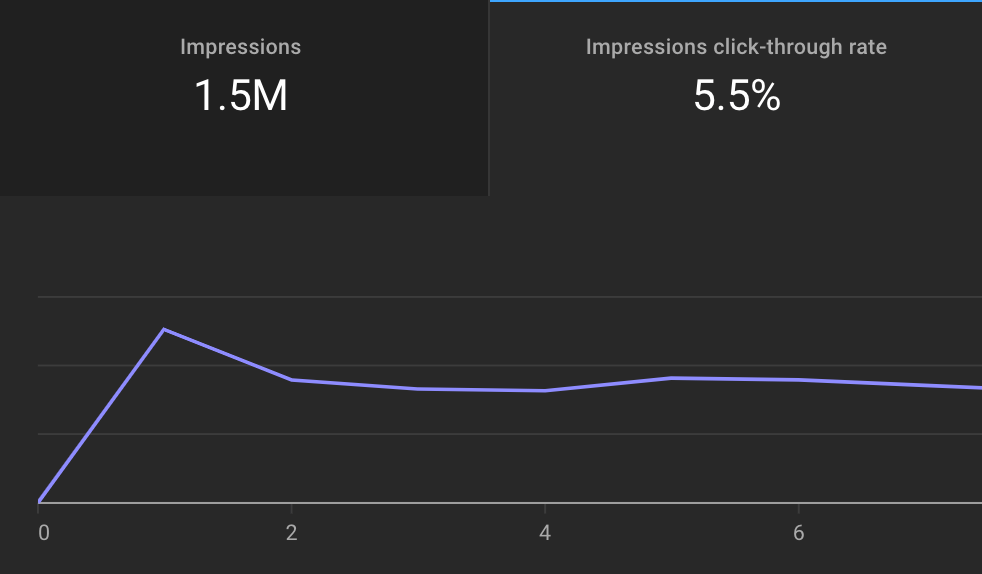
A low CTR is a problem, and one of the easiest ways to improve your CTR is to optimize your video titles and/or thumbnails. While this used to be a trickier process, in 2026, YouTube's thumbnail A/B testing tools allow you to easily experiment with different designs to improve CTR.
A high CTR shows that your content is intriguing, but remember that the promise of the thumbnail and title must align with the video to maintain trust and engagement. Otherwise you risk upsetting your viewers, which can result in low retention.
Read More: 6 Tips to Get a Good Click-Through Rate on YouTube
2. YouTube Audience Retention
Average percentage viewed (APV) is an important stat because it shows how much of your video viewers actually watched.
For example, here’s a screenshot of our audience retention for a 10-minute video. As you can see, most people watched 33% of it.

A higher APV indicates content that is more engaging to viewers, and can lead to more recommendations from YouTube’s algorithm.
Ideally, you will want to target an APV of 75% or higher for Shorts, and over a 50% APV for longer videos.
To capture a high APV, make sure to nail the fundamentals:
- Have a compelling hook right away
- Communicate a clear story
- Optimize the length of your video
Read More: How to Increase Audience Retention on Every YouTube Video
3. Traffic Sources
Although many creators prioritize search optimization and focus on YouTube search metrics, YouTube's recommendation algorithm tends to have the lion’s share of impact on audience discovery. More than 70% of YouTube views come from recommendations rather than search results.
Pay special attention to the “YouTube recommendations” segment. This is a critical traffic source on YouTube, and it should command most of your attention as it’s how many viewers will find your videos.
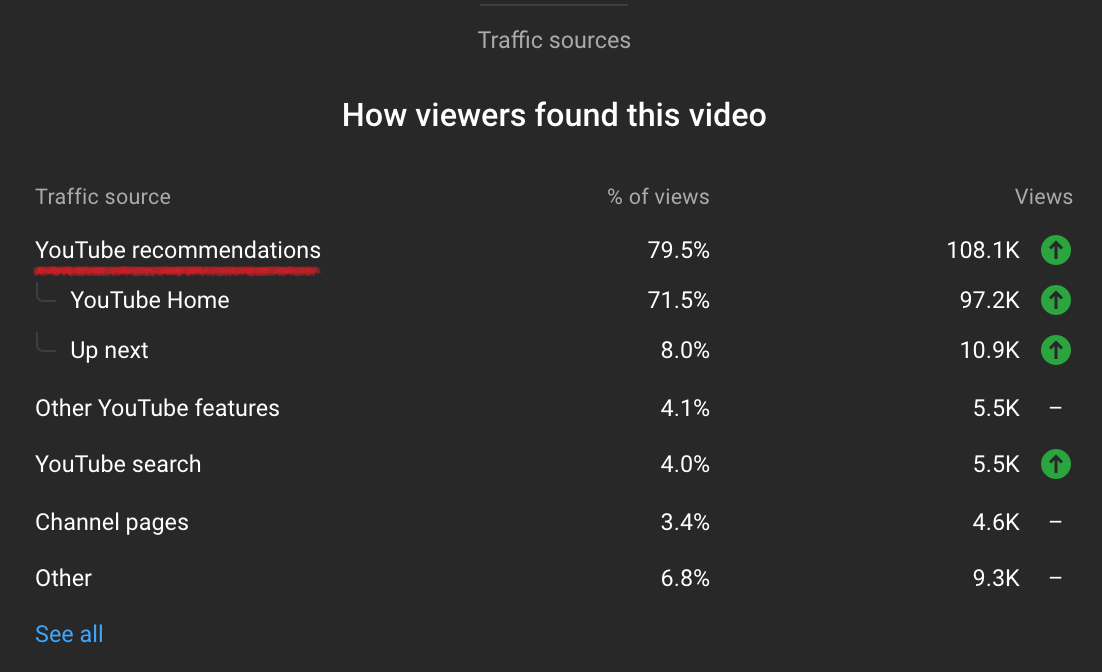
Keep an eye on this traffic source to see which videos get suggested the most, then make similar content for your audience.
Read More: YouTube Algorithm Guide - How Your Videos Are Recommended to Viewers
4. Subscribers Gained from Each YouTube Video
With the primary goal of increasing channel subscriber count, the Subscribers Gained metric is crucial for identifying the videos that add more subscribers.
Subscribers Gained will help you follow an important rule for YouTube: When something works, do more of it!

Simply go to YouTube Studio > Content (pick a video to analyze) > Analytics > Overview. You’ll see a dashboard showing how many people subscribed after watching a particular video.
Read More: 6 Honest Reasons You Might Be Losing YouTube Subscribers
5. YouTube Engagement Metrics
Likes, comments, shares, and remixes (particularly for Shorts) can provide a comprehensive picture of how viewers interact with your content.
Shares and saves, in particular, indicate virality and long-term value. Engagements including likes and comments, though of lesser direct value, are a huge indicator of audience feedback. And if you are seeing comments, you’ll definitely want to take the time to review them and respond, especially to the ones that allow you to directly interact with your viewers.
Videos with high engagement metrics are not only great for your ego, but they are a huge aid in your YouTube video metrics analysis.

You’re building a real community on YouTube when people start engaging with your content.
6. New vs. Returning Viewers
Balancing new and returning viewers is critical for sustained growth. These viewer metrics reveal how effectively your channel is attracting fresh audiences while maintaining loyalty among your existing subscribers.
To see these viewer metrics for any video, pick a video and click on Analytics > Audience.

This graph shows two things:
- How well your video is attracting new viewers
- How well your video is retaining previous viewers
Ideally, you want to see a healthy mix between new and returning viewers as that would suggest you are growing your audience while satisfying a loyal fan base.
Read More: How to Track Returning Viewers on Your Channel
Bonus: YouTube Shorts Metrics
With the rise of YouTube Shorts, metrics like "Engaged Views" and "Swipe-Away Rate" have become essential. Engaged views, which involve likes, comments, or longer watch times, play a significant role in monetization and algorithmic promotion, while high swipe-away rates may signal a need to improve your opening hooks.
Read More about YouTube Shorts Analytics here: How Does the YouTube Shorts Algorithm Work?
Helpful YouTube Analytics Tools
Ready to level up how you track your YouTube channel performance? Here are two tools that will help you monitor what matters and improve faster. If you have the vidIQ extension, you already have access to them, if you don’t have the free extension installed, you can get it here.
- YouTube stat tracker: This real-time stats bar that lets you immediately see specific metrics without opening the YouTube Studio.
- YouTube channel analyzer: When was the last time you had a channel audit? This tool easily helps you identify your best content and suggests improvements to your channel.
By mastering these YouTube Analytics, you'll be equipped to navigate YouTube's dynamic landscape in 2026!
Are you implementing best practices for YouTube’s algorithm? Here are six signs you’re well on your way.
FAQs
What are the most important YouTube metrics to track?
The core metrics that matter most are CTR, audience retention, traffic sources, subscribers gained per video, engagement signals, and the balance of new and returning viewers. These metrics show whether your thumbnails and titles are working, whether your content holds attention, and how viewers are discovering your channel. If you create Shorts, you will also want to track engaged views and swipe-away rate. Focus on these metrics, and you will understand exactly what is driving growth on your channel.
What is a good CTR and retention rate on YouTube?
A solid CTR for long form on YouTube typically falls between 4 and 10 percent, depending on your niche. For retention, aim for over 50 percent average percentage viewed on standard videos and about 75 percent or higher for Shorts. Higher retention tells YouTube that your content keeps viewers engaged, which increases your chances of getting recommended more often. These are benchmarks, not rules, but they are helpful targets to guide your improvements.
What tools can I use to track YouTube analytics more effectively?
YouTube Studio gives you the basics, vidIQ gives you more clarity and speed. The real-time stats bar lets you see key metrics immediately and the channel analyzer helps you identify top performers and weak spots so you know what to double down on. These tools make it easier to spot patterns and respond faster to what your audience wants.

